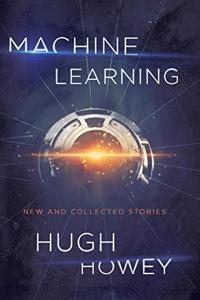
Want to learn the ideas in Machine Learning better than ever? Read the world’s #1 book summary of Machine Learning by Hugh Howey here.
Read a brief 1-Page Summary or watch video summaries curated by our expert team. Note: this book guide is not affiliated with or endorsed by the publisher or author, and we always encourage you to purchase and read the full book.
Video Summaries of Machine Learning
We’ve scoured the Internet for the very best videos on Machine Learning, from high-quality videos summaries to interviews or commentary by Hugh Howey.
1-Page Summary of Machine Learning
Machine learning allows systems to improve from experience and make independent decisions.
A machine learning algorithm can be trained in a variety of ways. First, scientists must define the parameters and goals for the algorithm. Next, they need to feed it with data so that it can make decisions on its own. One way to do this is through an apprentice approach where machines learn by observing humans and imitating them. They may also draw upon additional data if necessary when making decisions or determining outcomes of events based on their training from previous experiences. Machine learning is a very broad technology that can be applied to many different situations and scenarios as well
Machine learning will complement the work of highly skilled professionals.
Machine learning (ML) is a field of computer science that gives computers the ability to learn without being explicitly programmed. Before ML, machines and software replaced human workers performing menial tasks, such as office clerks and factory workers. But ML will affect many more jobs than those because it can help highly skilled professionals do their jobs better by complementing them. For example, lawyers may use ML to find relevant cases in legal databases while they interview witnesses or draft an argument for court. In general, though, experts think that the impact of ML on employment will be negative because it could replace people’s work completely.
Humans will continue to outperform machines at a wide range of complex tasks.
Machine learning (ML) is good at tasks that require processing data to find patterns. It can be used for diagnosing certain types of cancer with great accuracy, but it takes a physician to explain the reasoning behind the diagnosis. ML isn’t as useful in fields where conditions change quickly because it doesn’t have the ability to adapt and adjust fast enough. Additionally, ML algorithms are prone to perpetuating errors in training data if there are any mistakes made by human trainers.





